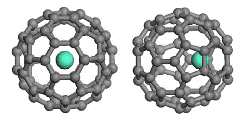Chemistry, Department of: Faculty Series

Xiao Cheng Zeng Publications
Document Type
Article
Date of this Version
2014
Citation
Nanoscale, 2014, 6, 2879; DOI: 10.1039/c3nr06072a
Abstract
We have performed a comprehensive first-principles study of the electronic and magnetic properties of two-dimensional (2D) transition-metal dichalcogenide (TMD) heterobilayers MX2/MoS2 (M = Mo, Cr, W, Fe, V; X = S, Se). For M = Mo, Cr, W; X = S, Se, all heterobilayers show semiconducting characteristics with an indirect bandgap with the exception of the WSe2/MoS2 heterobilayer which retains the directbandgap character of the constituent monolayer. For M = Fe, V; X = S, Se, the MX2/MoS2 heterobilayers exhibit metallic characters. Particular attention of this study has been focused on engineering the bandgap of the TMD heterobilayer materials via application of either a tensile strain or an external electric field. We find that with increasing either the biaxial or uniaxial tensile strain, the MX2/MoS2 (M = Mo, Cr, W; X = S, Se) heterobilayers can undergo a semiconductor-to-metal transition. For the WSe2/ MoS2 heterobilayer, a direct-to-indirect bandgap transition may occur beyond a critical biaxial or uniaxial strain. For M (=Fe, V) and X (=S, Se), the magnetic moments of both metal and chalcogen atoms are enhanced when the MX2/MoS2 heterobilayers are under a biaxial tensile strain. Moreover, the bandgap of MX2/MoS2 (M = Mo, Cr, W; X = S, Se) heterobilayers can be reduced by the vertical electric field. For two heterobilayers MSe2/MoS2 (M = Mo, Cr), PBE calculations suggest that the indirect-to-direct bandgap transition may occur under an external electric field. The transition is attributed to the enhanced spontaneous polarization. The tunable bandgaps in general and possible indirect–direct bandgap transitions due to tensile strain or external electric field make the TMD heterobilayer materials a viable candidate for optoelectronic applications.

